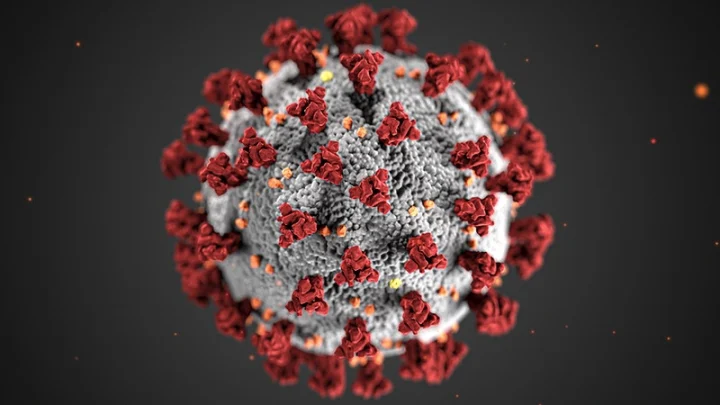The Human Cell Atlas – an aid to understanding COVID-19 & a valuable tool in the development of hiPSC models

The outbreak of the novel viral disease, COVID-19, caused by the severe acute respiratory syndrome (SARS) coronavirus 2 (SARS-CoV-2), has led to worldwide health and economic catastrophe.1 Almost 2 million cases and over 120,000 deaths have been reported alongside hundreds of published papers since the viral strain was first identified in China, December 2019.
The genome of COVID-19 has since been sequenced, identifying the pathogen as a new virus, closely related to the coronavirus responsible for the SARS outbreak in 2002.2 Such next generation sequencing is fundamental in allowing scientists to track the evolution of the virus, giving insight into if, and how quickly it is mutating. This information is vital in mapping its spread and developing an effective vaccine.2,3
The Human Cell Atlas, a collection of molecular maps that define the cellular basis of human health, is central in facilitating the international scientific response aimed at combatting the SARS-CoV-2 virus and a valuable resource that we use at Newcells when developing our human induced pluripotent stem cell (hiPSC) models.4
Newcells Biotech utilises information drawn from single cell sequencing, in a similar manner to that of tracking COVID-19, to understand a multitude of diseases across a range of cell and tissue types including lung, retina and kidney for which are developing in vitro cell models to facilitate drug discovery and development.
By generating a unique ID card within the Human Cell Atlas for each cell, a detailed picture of the network of cellular communication within the body can be assembled. Regulatory mechanisms that govern cell activity can be analysed as well as the identification of disease markers and signatures. This continually developing archetype of human biology in vivo aims to uncover new targets for therapeutic intervention. Recent technology, such as single-cell genomics, has accelerated the achievability of rapidly developing these therapeutics.4
The data within the Human Cell Atlas has given researchers insight into the pathological mechanisms of COVID-19. Collections of single cell RNA sequencing data within the Human Cell Atlas database have been used to identify human cell types and receptors used by the virus to invade cells.5 The cell type and tissue distribution of viral receptors provide an understanding of viral tropism, allowing a better understanding of viral transmission and facilitating development of clinical strategies for prevention of infection and therapy. Analysis of a compendium of data points revealed a prevalent role for nasal goblet and ciliated cells as initial viral targets.6 Single-cell co-expression patterns of key viral entry proteins were shown to be highly expressed in absorptive enterocytes from the ileum and colon, suggesting the digestive system as a potential route of entry for COVID-19.7 Research has identified angiotensin-converting enzyme 2 (ACE2) as the receptor through which the virus infiltrates the respiratory mucosa.1 Various cell types found in the eyes, kidneys, heart and brain similarly express ACE2 and are further targets of COVID-19 hijacking.3 The process of viral infection requires the S protein on the coronavirus to recognise and bind the ACE2 receptor, followed by invasion via clatherin-mediated endocytosis.1
In COVID-19, lung damage is a major hurdle to recovery in severe patients with the development of atypical pneumonia, acute lung injury and acute respiratory distress syndrome. Newcells Biotech are expanding the application of their hiPSC-derived lung model for use as an assay for investigating both virus biology and antiviral reagents. The model has confirmed expression of mRNA for the ACE2 receptor as well as exemplifying the typical in vivo architecture of lung tissue, containing cells such as basal epithelia, ciliated and secretory cells. Once ACE2 protein expression is confirmed the model can play a role in the race to develop a therapeutic intervention against COVID-19.
Our work and that of other groups highlights the importance of the Human Cell Atlas as a reference dataset for better understanding the SARS-Cov-2 virus and its pathological effects and other for research into other infectious and genetic diseases.
References:
- Yi Y, Lagniton P, Ye S, Li E, Xu RH. COVID-19: what has been learned and to be learned about the novel coronavirus disease. Vol 16, International Journal of Biological Sciences. 2020.
- Cheng ZJ and Shan J. 2019 Novel coronavirus: where we are and what we know. Vol 48, Infection. 2020.
- Baig AM, Khaleeq A, Ali U, Syeda H. Evidence of the COVID-19 Virus Targeting the CNS: Tissue Distribution, Host–Virus Interaction, and Proposed Neurotropic Mechanisms. Vol 11, ACS Chemical Neuroscience. 2020.
- BroadInstitute.org. Research Highlights: Human Cell Atlas. Available from: https://www.broadinstitute.org/research-highlights-human-cell-atlas [Accessed 01 April 2020].
- Qi F, Qian S, Zhang S, Zhang Z. Single cell RNA sequencing of 13 human tissues identify cell types and receptors of human coronaviruses. Biochemical and Biophysical Research Communications. 2020.
- Sungnak W, Huang N, Becavin C, Berg M, Network HCA. SARS-CoV-2 Entry Genes Are More Highly Expressed in Nasal Goblet and Ciliated Cells within Human Airways. 2020.
- Zhang H, Kang Z, Gong H, Xu D, Wang J, Li Zh, Li Zi, Cui X, Xiao J, Zhan J, Meng T, Zhou W, Liu J, Xu H. Digestive system is a potential route of COVID-19: an analysis of single-cell coexpression pattern of key proteins in viral entry process. Gut. 2020.
Share on social media:
Don't miss out on our latest innovations: follow us on Linkedin
Newcells Biotech
22nd April, 2020
Update



